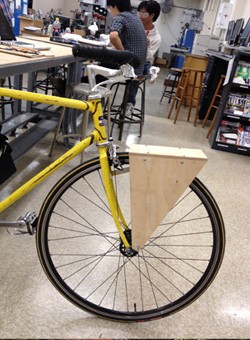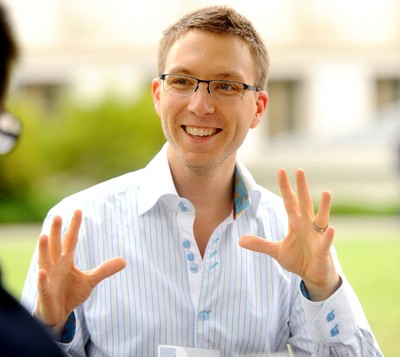Key to good design? Start with the end user

“If you’re an engineer and you’re working on a project to improve parks, you could stay in a lab. Or you could go to up to Tilden Park and get a fuller context of what visitors experience,” says Lora Oehlberg, a mechanical engineering graduate student and an instructor in a sequence of classes known as the human-centered design course thread. Through Berkeley’s course thread program, undergraduates explore themes that connect courses across departments and disciplines.
The human-centered design (HCD) course thread draws from history, psychology, engineering and other fields to study the interaction between human behavior and design function. “It’s a slightly different way of doing the research, more ethnographically inspired,” says Oehlberg, who is also the graduate student advisor to Berkeley Innovation, a project-based design club. “As an engineer, my job is to deeply understand people and design something in response that they’ll use. There’s nothing worse than designing something that doesn’t get used.”
Human-centered design incorporates the needs, wants and limitations of the end user into the engineering of goods, products or services. Developing a human-centered design product requires observation and communication with users in addition to technical problem-solving and process-optimization skills.
“Berkeley had no formal program for undergraduates to follow their passion for design,” says EECS professor Bjoern Hartmann, who helped develop the HCD course thread. “The design process is not limited to engineering questions. There are technical issues and questions of how a product fits in people’s lives. We thought that the right educational path should reflect this breadth.”

To complete a course thread, students must complete three courses from an evolving list of recommendations and then deliver a presentation reflecting on the experience.
“With so much to learn in a semester, the course thread encourages students to consider the human element in whatever they build. It was the anchor of my education. It’s how I tie everything together in my mind,” says Cole Hartman, a business major from UC Santa Cruz who transferred to Berkeley and is now a mechanical engineering graduate.
“We’re getting a wider audience to think about design questions,” says Oehlberg, who keeps a blog about human-centered design. “For the engineering students taking humanities classes through the course thread, they get to think about building things in the real world, which is often why they were interested in engineering in the first place.”
Many students in the HCD thread take ME110, Introduction to New Product Development. Professor Alice Agogino, the course instructor, says that teaching the elements of good design is an interdisciplinary task and that the course thread formalizes a pathway that many undergraduates benefit from experiencing during their freshman or sophomore year.
The HCD thread makes connections between different disciplines explicit. Sometimes tools used in different fields have different names but are essentially the same process. Software developers refer to need-finding—the process of observation and interviews that helps them figure out what their product should be able to do. Anthropologists and psychologists engage in contextual inquiry, a user-centered ethnographic process to understand people and their needs.

This is all good preparation for work on a team, Agogino says. Familiarity with these techniques—and the vocabulary to communicate with others on the team—is a boon in any number of fields.
“I think a lot of this is about career development,” says Oehlberg, whose doctoral research focuses on collaborative tools for product design teams. She says students who pursue the HCD course thread are better prepared to develop into so-called T-shaped people—with deep subject expertise and a wide breadth of experience to communicate across fields.
“If you have a bunch of I-shaped people you have a lot of depth in your field,” she says. “But if you can’t talk with peers on your team, you can’t collaborate with others. Taking the course thread courses, students are crossing that T. They’ll thrive at industry jobs that are tackling real human-focused engineering problems.”
